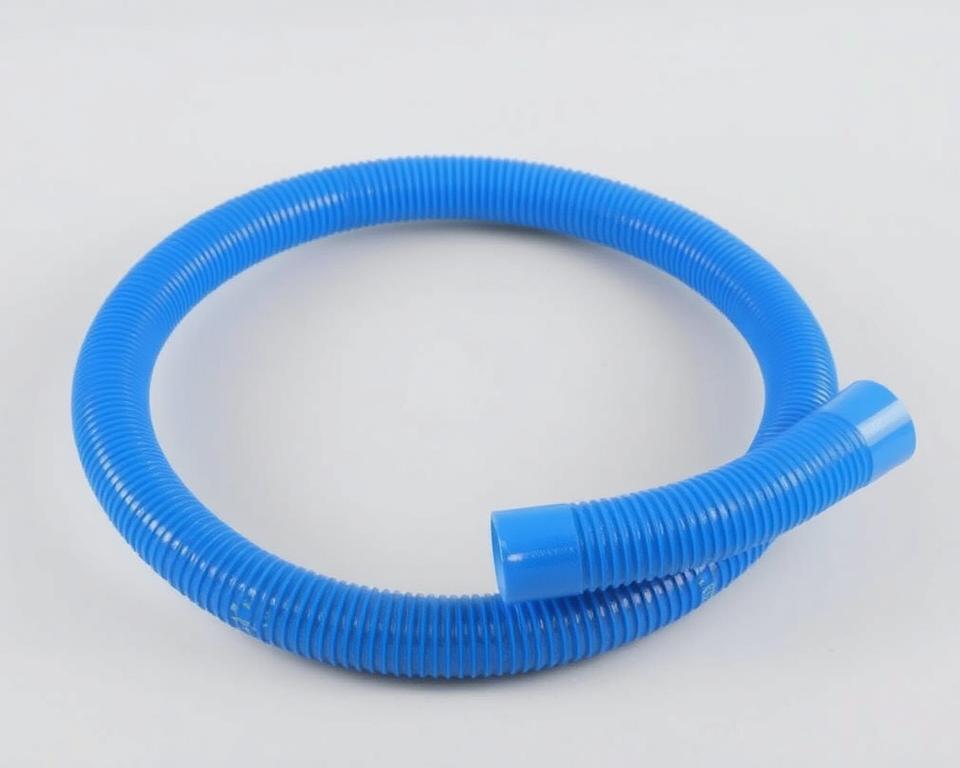PVC Pipe for Air Compressor Lines: Your Complete Guide
Did you know that a ruptured compressed air system can release energy equivalent to a stick of dynamite? Countless operations remain oblivious to the risks of certain piping systems they employ. Read on to discover why PVC air line choices demand top-tier safety.
Despite growing interest in certain materials, OSHA strictly prohibits their use in above-ground applications. Over time, exposure to oils and temperature changes weakens them, leading to catastrophic failures. Even at “safe” pressure ratings, the risk of explosions remains high.
Installation Parts Supply provides safer options such as aluminum piping. Investing in proper materials avoids costly fines and keeps workplaces secure. Here’s how to assemble a risk-free system.

Summary Points
- OSHA bans certain materials due to explosion risks.
- Heat and cold swings slashes claimed pressure capacity.
- Long-term exposure makes pipes prone to brittle breaks.
- Aluminum piping offers a safer alternative.
- Invest wisely to dodge fines and protect staff.
The Risks of PVC in Air Compressor Lines
All major brands advise against certain plastics in compressed air. A breach in a pressurized air line unleashes explosive power, unlike water. This makes material choice critical for safety.
- Brittleness: Cold snaps make pipe walls brittle and prone to cracking.
- Adhesive failures: Oil contamination and heat cycles break down glue bonds.
- Misleading ratings: Most shops run above 110°F, slashing rated pressure in two.
OSHA cites a $110,000 fine after a facility’s piping shattered, injuring workers. Compression heating lowers allowable pressure even more—often ignored.
“Above-ground use of certain plastics for compressed air violates OSHA standards due to explosion risks.”
Metal alternatives fail more predictably, bending rather than fragmenting. PVC shards fly far and fast, causing collateral damage.
Constant temperature swings in shops speed up pipe aging. A decade’s UV and chemical attack weakens plastic, so small leaks too often balloon into disasters.
Safe Alternatives to PVC Pipe for Air Compressor Lines
Aluminum piping systems outperform traditional options in both safety and efficiency. Black pipe vs. aluminum: aluminum wins with 90% fewer leaks. Aluminum’s lightness and anti-rust traits prolong system life.
Modular aluminum setups save time—no threading required. Prebuilt snap-together aluminum runs come from Installation Parts Supply. One auto factory trimmed labor hours by 40% via aluminum retrofits.
- Copper: Copper’s antimicrobial action suits it to cleanroom air lines. Requires soldering expertise.
- Stainless Steel: Resists rust in humid areas like coastal workshops.
- ABS/HDPE: For solvent-rich environments, ABS/HDPE stays intact.
“Our aluminum retrofit reduced energy waste by 15%—paying for itself in 18 months.”
Proper torque is critical. Too tight splits fittings; too loose lets air escape. Stick to recommended 25–30 ft-lb torque for aluminum.
Use NSF-certified materials when air quality is critical. Choose pipe rated for your specific operating environment.
How to Choose the Right Piping Material for Your Needs
Balance budget, safety, and performance when choosing pipe. One plant slashed $12k per year by adopting aluminum lines. Here’s how to make the right choice.
| Material | Cost (per ft) | Maintenance | ROI Time |
|---|---|---|---|
| Aluminum | $8.50 | Low | 18 months |
| Black Pipe | $5.00 | High | N/A |
| Copper | $10.20 | Medium | 24 months |
Watch your operating temperatures. Plastics fail under 32°F; aluminum works from -40°F to 200°F. Stainless steel stands up to harsh chemicals.
Pro Tip: Compute ROI based on compressed-air leakage. A 10% leak in a 50 HP system wastes $3,500 yearly.
- Match PSI ratings to your compressor’s output.
- Check OSHA compliance for weld inspections and pressure tests.
- Get a complimentary piping audit from Installation Parts Supply.
“Our aluminum retrofit cut energy waste by 15%—paying for itself in 18 months.”
DIY installations work for small shops, but professionals ensure leak-free joints. Check warranties—some pipes include decade-long coverage.
Final Thoughts
Smart material selection protects life and wallet. Studies show 92% of failures happen in older systems, often with dangerous results. With 99.8% uptime, aluminum is the clear long-term choice.
Don’t forget:
- Say no to plastics that can explode.
- Metallic lines beat plastics on both safety and durability.
- Failing to comply can cost you big in fines and claims.
Upgrade now and secure your workplace. Get instant quotes and special offers from Installation Parts Supply. Request your free template or emergency service today.
Commit to safer piping today—your team’s safety depends on it.
